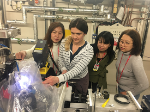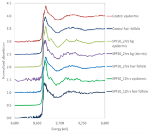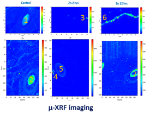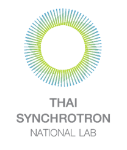____________________________________
Industrial Liaison Group:
Tel: +44 (0) 1235 778797
E-mail: [email protected]
For many years, the skin care industry has been challenged with providing sun protection for its users whilst being environmentally friendly and both easy and safe to use.
Many existing products on the market use nanoparticles containing zinc oxide and titanium dioxide. These have been known to provide a transparent coating when used in formulations spread onto the skin’s surface. This transparency provides an aesthetically pleasing result, not achievable with larger-particle formulations. However, the potential for solid nanoparticles to penetrate and to diffuse into the body raises a considerable health and safety issue. There has therefore been a drive for research in this area, to develop alternative solutions.
A new sunscreen formula minimising the appearance of pores and imperfections on the skin has been developed by the R&D team from Pan Rajdhevee Group (PAN), Thailand. This formula contains a mix of titanium dioxide and zinc oxide which have the potential to penetrate and be more easily absorbed into the skin. With help from a group of scientists from SLRI synchrotron in Thailand, and using research techniques at the Diamond synchrotron, PAN aimed to probe the presence of nanoparticles underneath the skin to see how far they were able to penetrate the skin1.
Initial investigations at the Thai synchrotron were conducted using micro X-ray fluorecence, on skin treated with the sunscreen. The results found that Zn and Ti had accumulated within the epidermis layer but not the deeper layers of the dermis. However, the team needed to determine how deep the nanoparticles had accumulated and in which epidermal layers. In order to do this, a very small beam was needed.
Using a combination of XRF and XANES on I18 at Diamond, the SLRI scientists studied the chemical speciation of Zn present at different skin depths and mapped the elemental distribution. Thanks to the microfocus beam on I18 they could look in detail at the epidermis layer (deep inside the skin). Using porcine samples (a proxy for human skin) treated with PAN’s commercial sunscreen (Minus), they captured data at intervals of 2, 6, and 12 hours after application to measure the zinc distribution in the skin.
The results showed that TiO2 and ZnO nanoparticles used in the Minus sunscreen penetrated the skin and accumulated in the stratum corneum, stratum lucidum and upper stratum granulosum of the epidermis layer at ppm scale but not the deeper epidermis layer or dermis layer. The scientists also learned that the speciation of Zn found in the hair follicles and tissue was different from that found distributed in the stratum corneum and the sunscreen.
Findings from this study are expected to have a significant influence on the future application of topical nanoparticulate-based technology strategies, in terms of dose and dermal distribution. The work demonstrates that synchrotron-XRF and XANES techniques provide a useful approach for analysing commercial products using nanomaterials.
Using Diamond’s research instruments, the team were able to use much thinner samples for the experiment which are more representative of human skin. Based on systematic μ-XRF/XANES studies on a series of skin tissues the scientists from Thailand obtained a quantification map of the elemental distribution within the skin.
Using a smaller beam size (ca. 2 microns) they could distinguish between the different layers of skin and look in much greater detail at the deeper layers to determine if nanoparticles were present.



“Using XRF and XANES at Diamond, we were able to measure the accumulation of TiO2 and ZnO nanoparticles from Minus sunscreen in the upper part of the epidermis and their impermeability through the skin. The results of this study will help to ensure the effectiveness and safety of our sunscreens. Consumers will therefore be more confident of these products and this will certainly benefit the company.”
Panida Laoratthaphong, Director of Pan Rajdhevee Innovation Agency at Pan Rajdhevee Group public Co., Ltd


1 the work was conducted under the Newton Fund programme
Diamond Light Source is the UK's national synchrotron science facility, located at the Harwell Science and Innovation Campus in Oxfordshire.
Copyright © 2022 Diamond Light Source
Diamond Light Source Ltd
Diamond House
Harwell Science & Innovation Campus
Didcot
Oxfordshire
OX11 0DE
Diamond Light Source® and the Diamond logo are registered trademarks of Diamond Light Source Ltd
Registered in England and Wales at Diamond House, Harwell Science and Innovation Campus, Didcot, Oxfordshire, OX11 0DE, United Kingdom. Company number: 4375679. VAT number: 287 461 957. Economic Operators Registration and Identification (EORI) number: GB287461957003.